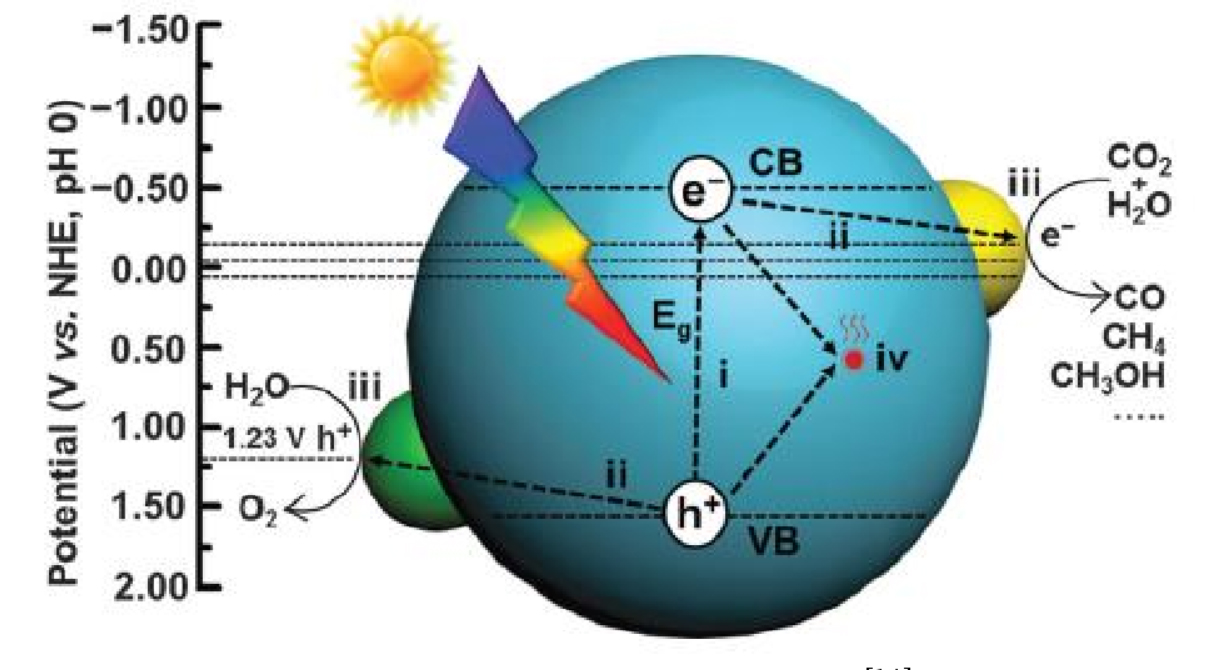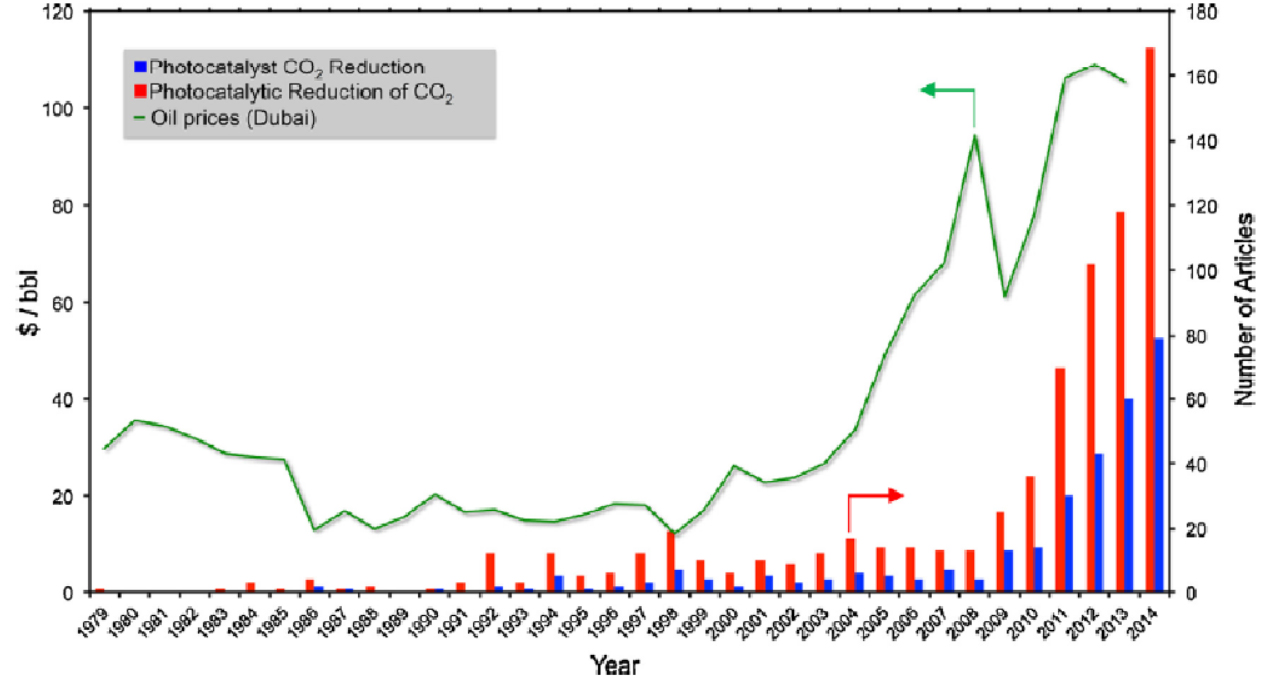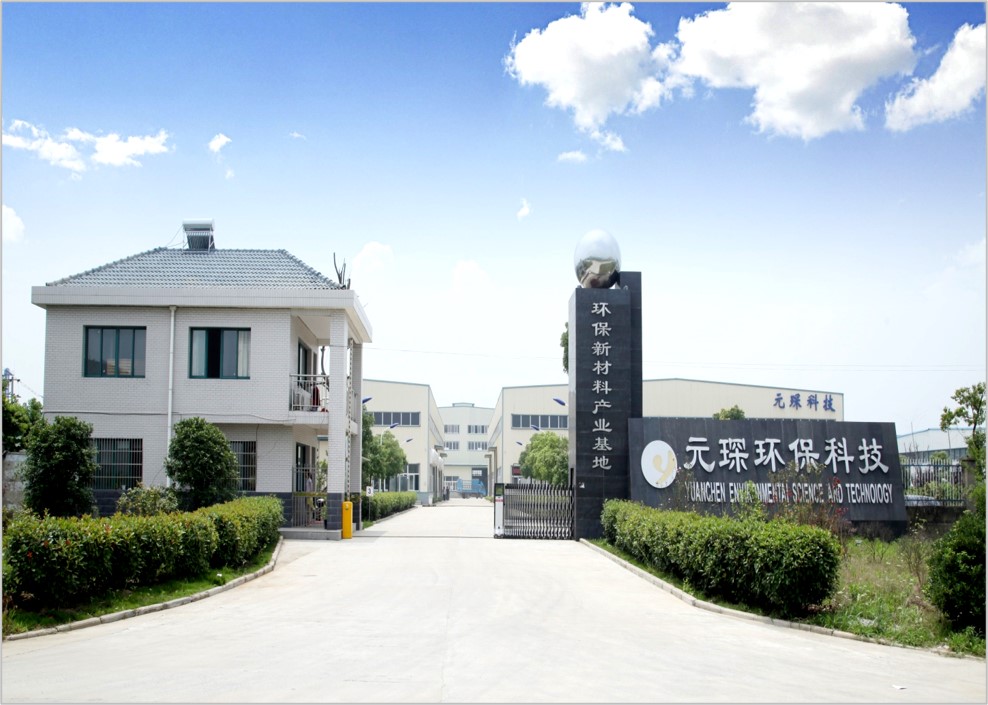
With the gradual increase of energy demand in modern society, fossil energy is slowly being consumed at a rate that increases year by year. At the same time, the burning of fossil energy is accompanied by the release of large amounts of CO2, which brings about a serious global greenhouse effect. Artificial photosynthesis - the photocatalytic reduction of CO2 to organic matter can not only reduce the greenhouse effect caused by CO2, but also potentially solve the problem of energy shortage, which can be said to kill two birds with one stone.

CO2光催化转化原理示意图
The phenomenon of photocatalytic CO2 reduction was first discovered in the 1980s, and then the oil crisis attracted the attention of several researchers and paved the way for work in this direction. Although this direction slowly cooled down at the end of the last century due to some alleviation of energy problems, in the last decade, in view of the increasing environmental and energy problems, photocatalytic CO2 reduction has regained attention and the research enthusiasm has increased dramatically, showing a steady upward trend.

Number of published literature on photocatalytic reduction of CO2 over the years
At present, the common products of CO2 photocatalytic reduction are mainly CO, HCOOH, CH3OH, CH4 and other substances, and the degree of reduction of the products increases with the increase of hydrogen content. Generally speaking, the higher the reduction degree, the more energy is required for the reaction, and the more complicated the reaction path, which means that the yield and selectivity of the reduction product will be reduced, which to some extent corresponds to the fact that most of the current photocatalytic CO2 reduction products are CO, HCOOH, etc. The CO2 photocatalytic reduction reaction has some similarity with the classical photocatalytic hydrolysis reaction: semiconductor The water oxidation reaction occurs in both valence bands of photocatalysts, and for photocatalytic water decomposition, hydrogen precipitation reaction occurs in the conduction band position, while for CO2 photocatalysis the hydrogen coupled reduction reaction of CO2 and water dissociation occurs, rather superimposing the water decomposition process to CO2 reduction than directly producing hydrogen precipitation. Since the hydrogen precipitation potential is close to the CO2 reduction potential and the water oxidation process is the same, the catalysts usually used for photocatalytic water decomposition can also be used for CO2 photocatalytic reduction, and the reported CO2 reduction photocatalysts can be mainly classified as follows.
(1) Simple oxides: TiO2, ZnO, CeO2, Cu2O, etc.
(2) Composite oxides: BiVO4, Bi2WO6, Zn2GeO4, etc.
(3) Sulfides: CdS, ZnIn2S4, ZnxCd1-xS, etc.
(4) Nitrides: C3N4, GaN, etc.
(5) halides: BiOCl, BiOBr, etc.
(6) Others: layered bimetallic hydroxides LDH, MOF, etc.
The number of CO2 photocatalytic materials reported in the literature is huge and diverse, and the most important problem to be solved at present is still the unsatisfactory photocatalytic performance or energy utilization efficiency.

Anhui Yuanchen Environmental Technology Co., Ltd (hereinafter referred to as "Yuanchen Technology") is a high-tech enterprise integrating R&D, production and sales of dust removal bags and denitrification catalysts. Over the past sixteen years, Yuanchen Technology has been focusing on the environmental protection field, and now has 4 international PCT, 33 authorized invention patents and 77 invention patents in process, among which many products such as "dust removal and denitrification integrated technology products" have been awarded the Scientific Progress Award of Anhui Province. Our dust removal bags (mainly PPS, PTFE, P84 and composite series needle felt) and SCR denitrification catalysts have been widely used in cement, steel, glass kilns, waste incineration power generation, biomass power generation, non-ferrous metal smelting and other industries. In the future, Yuanchen Technology will be guided by "becoming the guardian of global ecological environment", always rooted in environmental protection, and insist on the great cause of guarding the blue sky and white clouds. Leveraging on the national ecological civilization construction pattern, we will continue to deepen technology, optimize management, strengthen brand, refine industry and solidify advantages, and create synergistic value for industry through comprehensive and integrated governance and services.